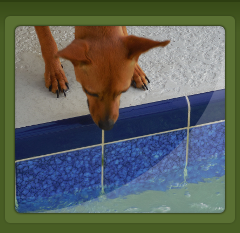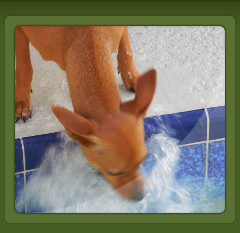DIFALCO DESIGN
"SIMPLY THE BEST"




|
ABOUT THE OWNER
I am not that interesting, but here goes nothing. I was born on 11/09/57 and grew up in Irvington, N.Y., which is on the Hudson River about 20 minutes from NYC. The first raceway that I every walked into was on Central Avenue in Hartsdale, N.Y. when I was about 10. This is where I first met Lou Del Rosario who was managing the raceway. A couple years later Lou opened the legendary Elmsford Raceway, which is still in operation to this day. Every Friday I would get dropped off at the raceway after school at 3:00 to race in Elmsford's Jr. Club for kids. We raced non-stop until 5:30 and then held a race at the end of the day, all for $5 per week. After winning the Jr. club championship one year Lou rewarded me with a trip to my first real car race at Lime Rock Park, CT. I was hooked. The racing program at Elmsford in the early 1970's was extensive. We raced D production, Nascar, midget cars, G7 Can Am and G7 Indy cars with folded bodies. Sometimes running 4 nights a week! Concourse was big back then and racers would spend hours detailing bodies and gluing transmissions and engine stack pipes from plastic models to your car to win a concourse plaque. Every race Lou would give out a concourse plaque as well as a plaque for 1st and 2nd place and merchandise certificates. Every year Elmsford would hold an awards banquet complete with food to hand out trophys for 1st through 3rd places in all the different series. By far the most fun was had during endurance races. Yearly 12 hour races with 4 hours of darkness eventually turned into 24 hour races with 8 hours of darkness and 5 man teams. Everyone would set up their pit spaces on card tables with cardboard boxes on top to shield the track from pit lights during darkness. Only one counter light was used to illuminate the entire raceway during darkness hours. At a couple different times during the daylight racing the track was hit with rain, mud and obstacles. How did that happen inside a raceway? The rain was windex foam that would be sprayed on the track. The mud was glue that was applied to the straightaway. The obstacles were light foam blocks that would suddenly be scattered over the main straight. Crazy but fun. The east was filled with legendary names running in the U.S.R.A. Laster, Tony.P., Joel, Labree, Provetti, Boyington, Sohl and many others famous racers. C & C Raceway, Joel's Race Place and Clementon Raceway were the places to race. I missed my high school graduation for a race at Clementon (even though I never won a race there). Joel would hold a summer and a Christmas race every year. To tie in with the U.S. Bicentennial celebration in 1976 the U.S.R.A. Nationals were moved from Labor Day back to July at Joel's Raceway. Every big time racer from P.A. Watson to Stuebe was there. I qualified 4th fastest for the semi, made the main event and ended up finishing in 7th place. I traveled to Switzerland in 1977 and Austria in 1978 to race against the best European racers. It was unforgettable for the experience but disappointing in racing results, I finished in 9th place both times just missing the main events. I continued to race in the U.S.R.A. East and at the Nationals through 1986 then I took a break from racing except locally at Elmsford. Working at various manufacturing places over the years gave me a solid background in assembly, layout, electrical and design disciplines. When my company decided to move to Virginia, and I wanted to stay in N.Y., I started Difalco Design as a fulltime business in 1990. External resistor controllers ruled the slot world back then. Things have certainly changed. I escaped the N.Y. weather in 1995 and we have been in Florida ever since. If you are still reading this then thank you for your time! The most rewarding part of slot racing was not only the competition, but meeting many great people and a few characters along the way. If I am still kicking by 2019, I will celebrate 50 years in slot racing. Geez, I am old. |